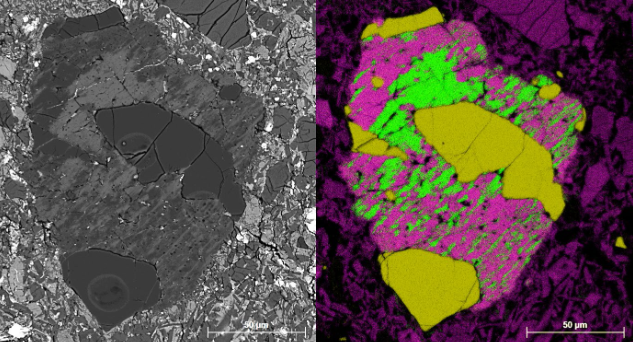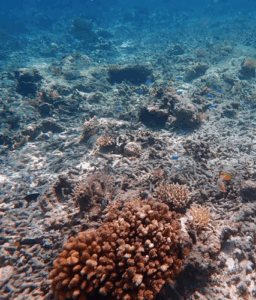‘Black Beauty’, the Martian meteorite that sheds light on the formation of the Earth’s continents
A team of scientists, including Virgile Malarewicz (Muséum national d’Histoire naturelle, GEOPS-IPSL) and Sylvain Bouley (GEOPS-IPSL), has published a study in the scientific journal Nature Geoscience, providing new information on the process of formation of the Earth’s continents using granite fragments contained in the Martian meteorite ‘Black Beauty’.
A team of scientists from the Muséum national d’Histoire naturelle, Sorbonne University, the CNRS
Université de Lille and Université Paris-Saclay, has published a study in Nature Geoscience highlighting the discovery of 4.4 billion-year-old granite fragments contained in the exceptional Martian meteorite ‘Black Beauty’. Granites are the main constituent rocks of the Earth’s continents. Their presence in a meteorite from Mars leads us to reconsider the geological history of this planet and shed light on the process of continental formation on Earth.

Granitic fragments in meteorite NWA7533 as seen by scanning electron microscopy, using backscattered electrons (left) and X-ray emission (right). The colours that add up correspond to the chemical elements present (silicon in yellow, iron in red, potassium in green, calcium in blue and sodium in pink. Quartz grains appear black on the left and olive green on the right. They are associated with potassium feldspars (apple green) and sodium feldspars (pink), as is typical in granites. Malarewicz et al, IMPMC. Press release dated 21 February 2025.
The study published in Nature Geoscience reveals the presence of granite fragments dating back 4.4 billion years in the Martian meteorite NWA7533, better known as ‘Black Beauty’. These rock fragments, whose mineral assemblage is dominated by quartz and feldspars, are the most advanced silicic rocks known among differentiated Martian lithologies.
Their presence suggests that continental embryos began to form on Mars at the same time as continental embryos were probably forming on Earth. The existence of 4.4 billion-year-old Martian granites provides a better understanding of the process by which terrestrial continents were formed, with the oldest rocks destroyed by a combination of erosion and plate tectonics. The only evidence we have of the Earth’s extremely ancient history are isolated zircon grains that are 4.3 billion years old. These zircons bear witness to the early formation of granitic rocks in the presence of water, at the origin of the Earth’s first continents, of which they are the only relics.
Mars has not undergone the complex geological evolution of the Earth and has not developed plate tectonics, which has enabled very ancient rocks to be preserved. The study of these very ancient Martian granite fragments suggests that they were formed by the crystallisation of magmas in the presence of water following one or more impacts, a major geological phenomenon in the formation of planets. It is likely that the same processes were at work in the genesis of the embryos of the Earth’s continents, which have now disappeared.
More
Laboratories
- Muséum National d’Histoire Naturelle, Sorbonne Université, UMR CNRS 7590, Institut de Minéralogie de Physique des Matériaux et de Cosmochimie, Paris, France
- Université Paris-Saclay, UMR CNRS 8148, GEOPS, Orsay, France
- Laboratoire Temps Espace, UMR CNRS 8255, Paris, France
- Institut de Sciences de la Terre, University of Lausanne, Lausanne, Switzerland
- Université de Lille, INRAE, Centrale Lille, UMR CNRS 8207-UMET-Unité Matériaux et Transformations, Lille, France
- Laboratoire de Géologie, Département de Géosciences, École Normale Supérieure, UMR CNRS 8538, PSL University, Paris, France
- Lunar and Planetary Laboratory, University of Arizona, Tucson, AZ, USA
- Department of Earth, Ocean & Atmospheric Science and National High Magnetic Field Laboratory, Florida State University, Tallahassee, FL, USA.
Reference
V. Malarewicz , O. Beyssac, B. Zanda, J. Marin-Carbonne, H. Leroux , D. Rubatto, A. S. Bouvier , D.
Deldicque, S. Pont, S. Bernard, E. Bloch, S. Bouley, M. Humayun & R. H. Hewins, (2025) Evidence for pre-Noachian granitic rocks on Mars from quartz in meteorite NWA 7533, Nature Geoscience.
DOI : https://doi.org/10.1038/s41561-025-01653-z





